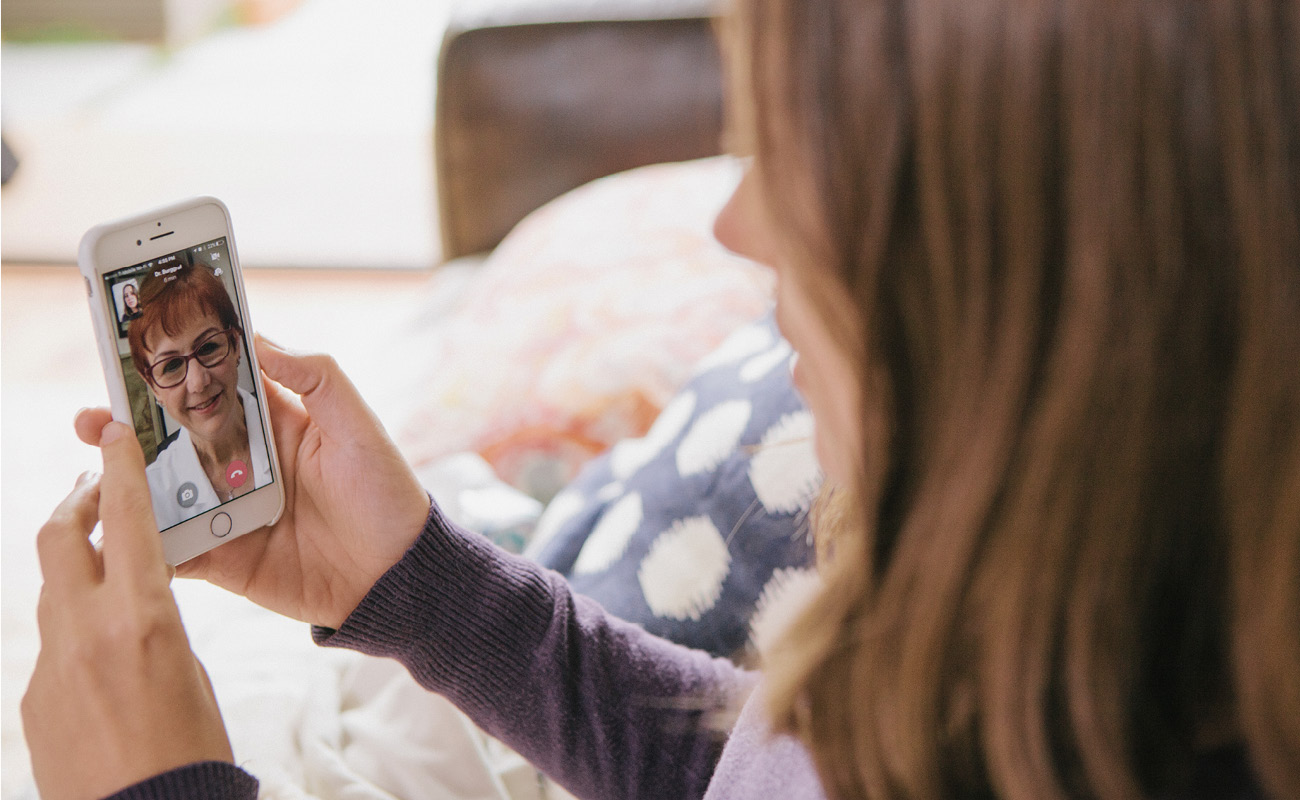Future of Health Care after COVID-19: How Telehealth is Providing a Catalyst for a Change

In the coming, post-COVID-19 world, there will be a real opportunity to put patients back in the health care driver’s seat, providing services at a time, space, and place that’s convenient for even the busiest of lifestyles. That means, creating a new front door, so to speak, through which patients can access care in a moment’s notice, all while maintaining a relationship with their family physician.
Health care is at a turning point.
The future of health care awaits behind a digital front door that allows patients to access the entire ecosystem with the touch of a button. With virtual care, patients will utilize telehealth technology to connect to their own primary care physicians, specialists, and emergency medical providers, all with the touch of screen.
A telehealth timeline in the age of a pandemic
As the coronavirus pandemic escalated in the U.S., government and health care officials began to push the use of telehealth to address symptoms of the novel coronavirus. In turn, patients, providers, and payers alike had to adapt — fast.
Local providers – many of them faced with empty waiting rooms – were quick to transform their business models, offering telemedicine services for everything from mental health care services to physical therapy.
Within days, CDPHP and its top, local competitor, MVP Health Care, partnered to offer our members a new, no-cost telemedicine option, powered by local tele-med provider, United Concierge Medicine. The unlikely partnership turned some heads as two of the Capital Region’s largest health plans partnered in the interest of public health.
With mobile apps and dedicated telephone numbers, CDPHP’s ER Anywhere and MVP Health Care’s myERnow, quickly triaged patients to the appropriate point of service, reducing the need for patients to leave home and alleviating overcrowding in emergency rooms.
Through the technology, providers can assess a patient’s need for COVID-19 testing, prescribe appropriate treatment or transport, and oversee follow-up care. This not only reduced the spread of the virus, but kept local doctors’ offices, urgent care centers, and emergency departments uncrowded and available for emergency cases that required in-person medical care, such as stitches, X-rays, intravenous fluids and more.
As the COVID-19 crisis escalated, telemedicine – a technology which had been somewhat slow to adopt – exploded.
Has COVID-19 solved ER overcrowding?
In a recent article for Forbes, Dr. Lisa K. Fitzpatrick posed the question, “Has Coronavirus Solved America’s ER overuse problem?” Through conversations with health care administrators as well as front-line emergency room staff, Fitzpatrick explores the idea of telehealth as the solution for ER overutilization, and delves into how the recent, and rapid, shift to virtual care has emerged as a result of the pandemic. At the peak of the COVID-19 crisis, ER and urgent care visits were down across the country as much as 40 to 50 percent.
While Fitzpatrick’s question is certainly thought-provoking — and one that would indicate a significant shift in health care — there are perhaps too many pandemic-specific scenarios to be able to answer this recent trend. Within the industry, many are debating the reasons why patients are staying away from the ER and urgent care during this time of COVID-19.
The two most asked questions: Are patients staying away because stay-at-home orders have them in fact staying home and doing less, resulting in less injury and illness? Or, are patients staying away simply because of the fear of contracting the virus?
A recent poll from the American College of Emergency Physicians (ACEP) found that nearly a third of people have delayed getting care out of concern around Covid-19.
More so than ever before, due to the pandemic, patients are utilizing telehealth and a virtual care model to address medical issues for which they’d otherwise visit the emergency room.
Many in health care hope that patients will not return to their immediate, and somewhat natural, reactions of immediately heading to the emergency rooms and urgent care when they have a concern. The successful use of telehealth in the time of a pandemic is one thing; the continued, effective use of telehealth in order to solve ER overutilization is another. Health plans and physicians alike have to support and foster its appropriate growth, but for the majority of care, the physician-patient relationship is sacrosanct.
 The Daily Dose
The Daily Dose
Comments are closed.